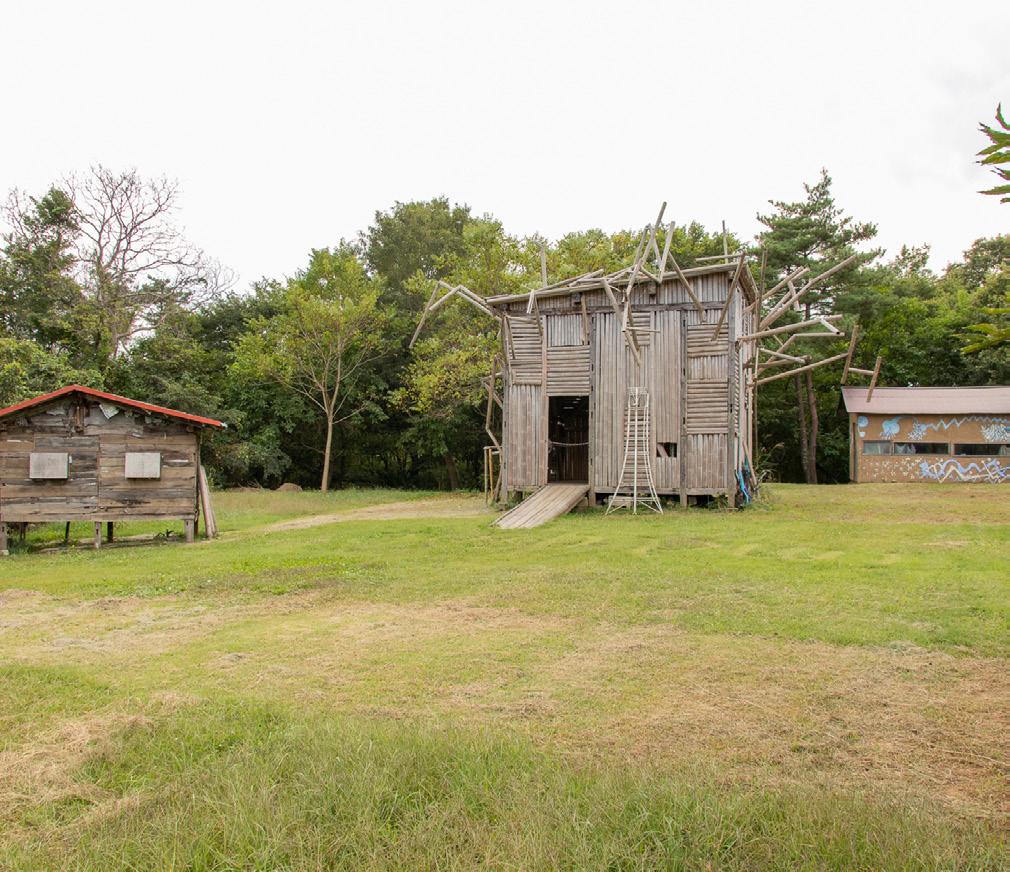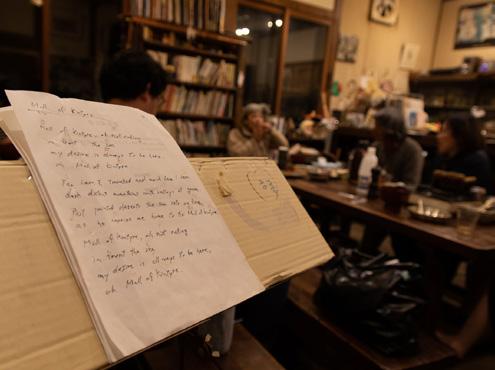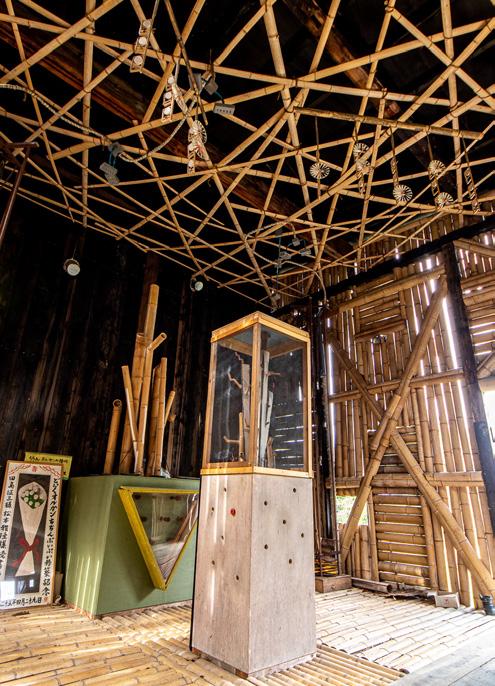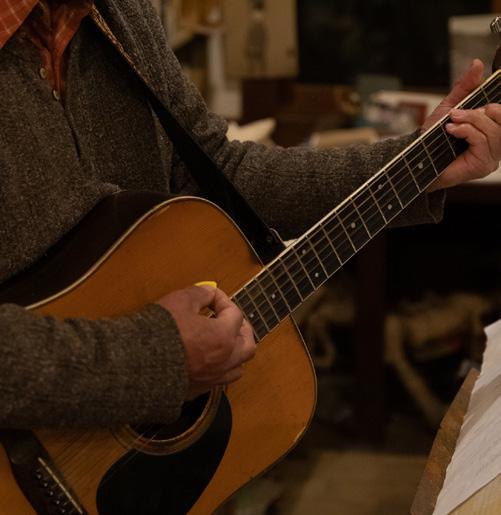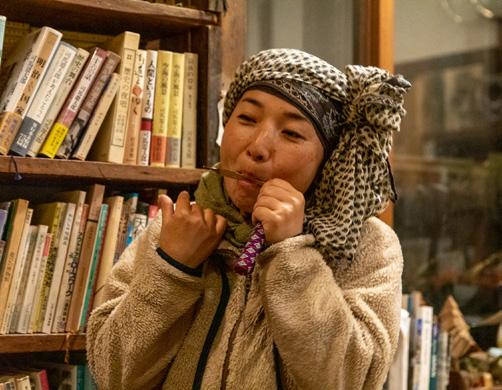
1 minute read
Under the Apron: Dokusho No Mori Cafe
Translated by Giovanni Perez
Dokusho No Mori
Advertisement

in Komoro City, Nagano

1. Why did you open “Dokusho No Mori” Coffee Shop?
I used to visit a cozy cafe while living in Kyoto over 40 years ago. The cafe’s motto was to have a “good time in a good place.” I loved the idea of a coffee shop but I wasn’t just ready to have one of my own. Fast Forward to ten years and during the middle of me deciding my next career path I was reminded of the lovely cafe I frequently visited. It was at that time I decided to start my own coffee shop. I used my personal experiences and thought the concept of the coffee shop should be a place where people from all walks of life could gather and be inspired. A place where you can have your creativity run free without borders. Another important aspect about a coffee shop, at least for me was having a serene location. Ever since I was a boy I was always interested in the plateau of Mimakigahara in Komoro City, Nagano Prefecture. The plateau always attracted me with it’s beauty. Although I have only known about it, I never once visited until I decided to open my own coffee shop there. I never doubted about living in the rural side of Japan with hardly any people or attractions around but I was unsure of what to expect. Nearly 30 years have passed and although some people were skeptical we have made a marvelous place for people to come and let their dreams run as far as they let them. We have hosted artists, back-packers, families, and many more people from around the world. I feel that it was our destiny to start our coffee shop in Mimakigahara.
2. What is the best Part about owning a Coffee Shop?
- My workplace and my living space have become one, making for a much more fun independent life. - I have become more diverse in my creativity. - I have come to meet many visitors who have become dear friends. I have also started my own guesthouse, which opened the doors to learning about others peoples live’s and cultures.
3. Are there any funny stories to share ?
There have been so many that there isn’t enough space to write all of them but I will discuss the time I published a picture book “Let’s look at the quiet forest” commemorating the opening of our “Dokusho No Mori” coffee shop. It was a graduation project I did with one of my cousins. One day, about three years after the store opened, I received a phone call asking me if I would be interested in composing a choral piece based on the poems in this picture book from Prof. Shozo Koyama, Professor Emeritus of National College of Music. Eventually, the composition was finished and the day came for the first performance by the choir. It was held at a hall in Mitaka City. The performance was given by graduates of Musashino Music University, conducted by Professor Shozo Koyama. We were invited to go on stage for the first performance. A couple of years later, a reading group in Saitama Prefecture asked us about creating a performance piece on the very same book. This was also unexpected. They came all the way to our house later and presented their performance in our field.I was told later that they counted it as one of their most important performances, and they continue to perform it to this day. I honestly didn’t believe this simple book that I created with my cousin for a college project would get this much attention. It went from a book, to a musical piece, and then later on to a performance. What was once a two-dimensional picture book has been given a new life with the addition of voice and acting. It showed me that no matter what you do, if you just express how you feel, regardless if it’s a masterpiece or not, it’s a seed that can sprout into something much more beautiful. 4. What did you do before Dokusho No Mori?
I used to work at a disability center that was just getting ready to open its doors to its new patient. I actually injured my hand the day of the opening up so I had a pretty noticeable bandage wrapped around my hand. There was one particular patient who had a much more severe physical impairment than mine who kept asking me if I was okay. The patient suffered from excessive saliva which they couldn’t control on their own. Even though the person’s saliva was coming out profusely, the patient’s only concern was if my hand was okay. This opened my eyes and for the longest time I did not know what to call this emotion. Working at the disability center helped me become more open with myself and others. I called this emotion, “ningen maru dashi” which is exponsing of oneself and not really caring about how you look to others. My experience of working this job paved the future of “Dokusho No Mori” coffee shop today. I try to be myself and also help anyone who walks into the coffee shop regardless of who they are.

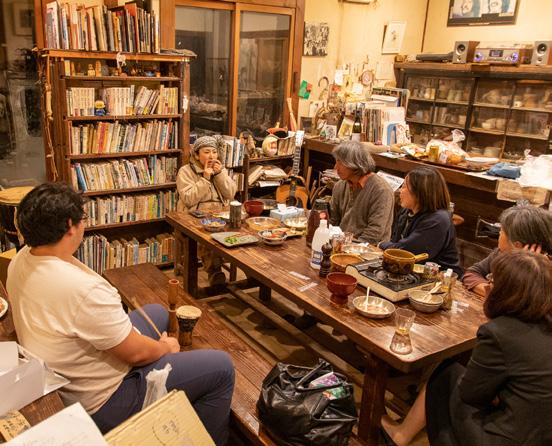
5. Why did you name the coffee shop “Dokusho No Mori”?
There are a few ways to answer this question. To put it simply, it started with my love of reading and me wanting to build a quiet and secluded place. I originally presumed that all coffee shops should have a certain amount of books inside them for people to expand their knowledge and creativity. There was also no such word as “book cafe” during my time so it was something new for everyone. In hindsight, it should have been called “Words of the forest” but three years ago we actually started to plant trees and change the level of forestation in the community, so in a sense “Dokusho No Mori” or Book Cafe in the Woods in English, seems just about right. 6. What makes Dokusho No Mori Special ?
What separates us from other coffee shops is our identity. Even though our main priority is to provide a space for visitors to read, over the years since we have started, our meaning of Coffee shop has changed drastically. At Dokusho No Mori we have weekly and monthly events from performances, live dances, artwork from various artist around Japan and foriegn countries, and different types of livable structures ( huts, mangolian canopy, etc.) in our enormous “Art-field” towards the side of coffee shop. So I would say that the biggest difference of our shop is our identity, in other words our ability to change what we do year after year. What we were doing last year might not be the same of what we are doing next year. 7. Please describe your coffee shop in three phrases!
1) “Kissa Kyo” It means to drink some tea and relax. 2) “Souzou” It means to create something from the heart and be excited while doing it. We have been doing that here for almost 30 years. 3) “Utsukushia No Tankyu” It means The quest for beauty, My quest in life is to make my life more and more beautiful each year. Especially in our Art field that we have behind our Coffee Shop. Adding beautiful new pieces every year for friends and visitors to enjoy together.
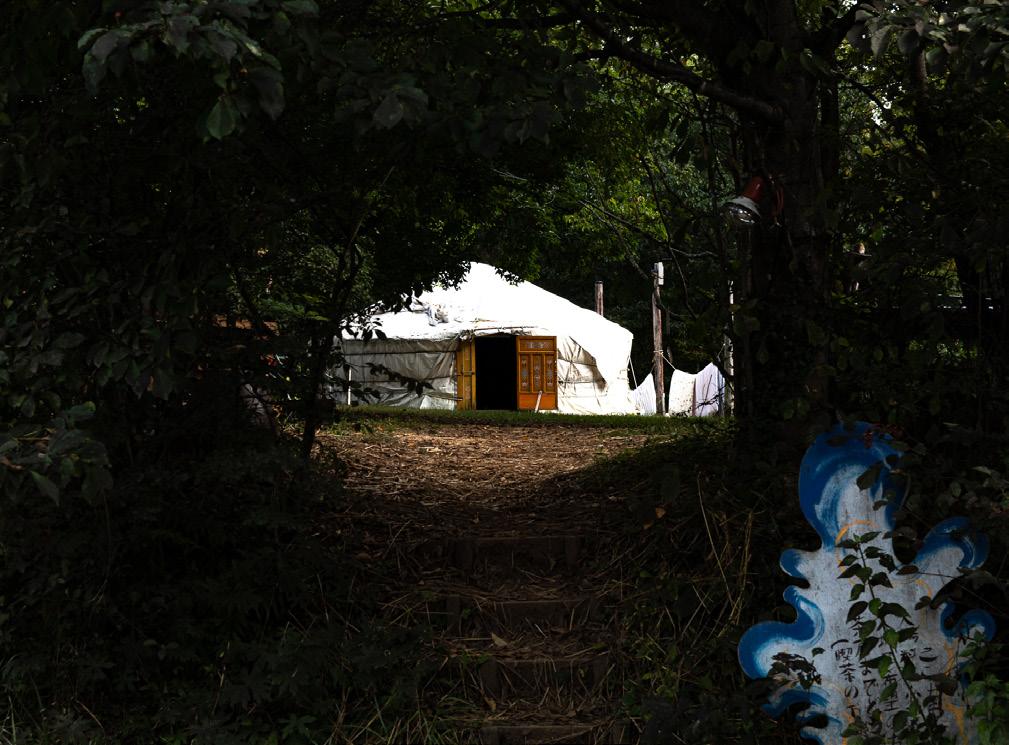
8. What do you like about Komoro City ?
I like the scenic beauty of Komoro City. Komoro consists of the large Asama foothill side across the Chikuma River and the tableland-like Mimakigahara in the southwest. The Asama side faces south and has a large sunny view. It is also beautiful to see how the buildings and other structures are illuminated by the sunlight and glow white at the base of the large Asama mountain. On the opposite side the horizon cuts off in all directions, and allows you to see the peaks of Asama foothills and Northern Alps. This area itself is known to have the longest daylight in Japan so you have a chance to look at the sunset for more than your average time. One more thing. This is to promote the city of Komoro. There are two excellent literaturerelated public exhibitions in Komoro. One is the “Komoro Fujimura Prize for Literature” and the other is the “National Haiku Contest for Kyoshi Komoro”. The former is based on the fact that during the Meiji era (18681912), Shimazaki Touson was assigned to Komoro as a teacher at the Komoro Gijuku private school and lived there for six years. During his time in Komoro, he reached a major turning point as a poet and writer and produced a series of outstanding works. The latter is due to the fact that the haiku poet Takahama Kyoshi lived in Komoro for a while during and after the Greater East Asia War, and during that time, he wrote excellent haiku and taught haiku poetry workshops. In the small city of Komoro, it is wonderful that public exhibitions have been held for nearly 30 years. However, the push for Japan’s “natural energy” or “clean energy”, are being built here and there, destroying the beautiful scenery and environment in harmony with nature. This has become a major social problem in this area, especially in Komoro City. There is a major problem in the agriculture and forestry industry itself, where farmland and forests have been left untouched and unused for many years. In principle, this problem would not exist if farmland and forests were used. In order to prevent the proliferation of solar power plants, we need to come up with practical ideas and practices to revitalize the agriculture and forestry industries. We are trying not to think of it as someone else’s problem, but as our own, even if it is just a small series of ideas and practices.

9. What else is there to do in “Dokusho No Mori?”
• Stay in one of our home-made huts. • Farming Experience • Art • Dancing • Performances • Read • Anything you put your mind to. We do a variety of things inside and outside the coffee shop. I’m actually a farmer so I tend our rice fields or help out my wife in her garden called “Megumi Garden” from time to time. We also have our “Ibarumi Elementary School Site” and in the woods that we have to keep maintained from time to time. There was a time a couple of years back that we weren’t allowed to house guests, but I spent some time creating various huts for guests to be able to stay in them.
10. Do you have any final comments about your coffee shop ?
I have been running a guest house behind our coffee shop in our “Art Field Reading Forest” for the past six or seven years. It is great to be able to share various stories with guests from Japan and abroad over dinner, and even sometimes I am strongly impressed and inspired by them. Please come and spend some time with us. It is always a pleasure for us to hear the unique stories of each of you during our meals. Lastly, I would like to introduce one of our regular events in recent years, the “International Bon Dance Festa & Imaichi (abbreviated as Bon Fest). I’m not going to go into how it all started, but it’s an event where everyone dances around while musicians play original Bon dance songs live. It’s an all day event with dancing, food, and even a flea market called “Imaichi” In the afternoon. Please come out and enjoy the Bon Festival every year on the 13th of August. Ah yes, I forgot to mention that our coffee is the best around this region. If you think I’m lying, why don’t you come and try for yourself, my treat !
